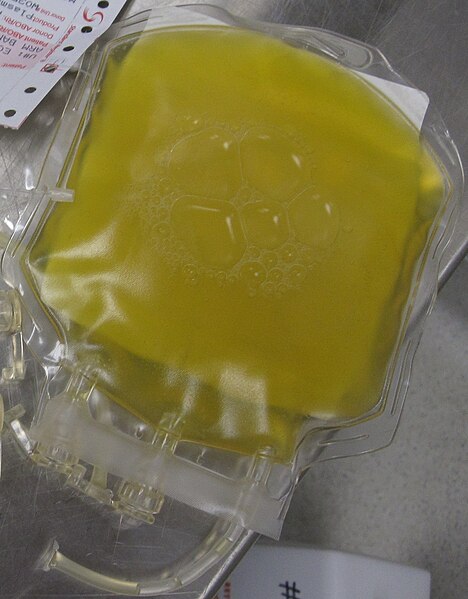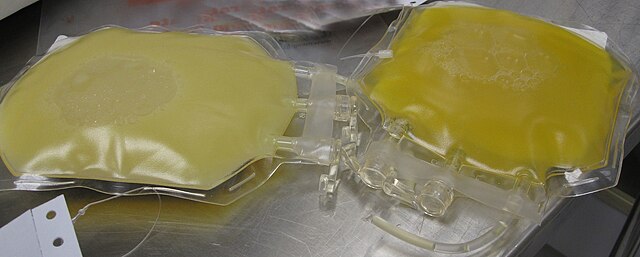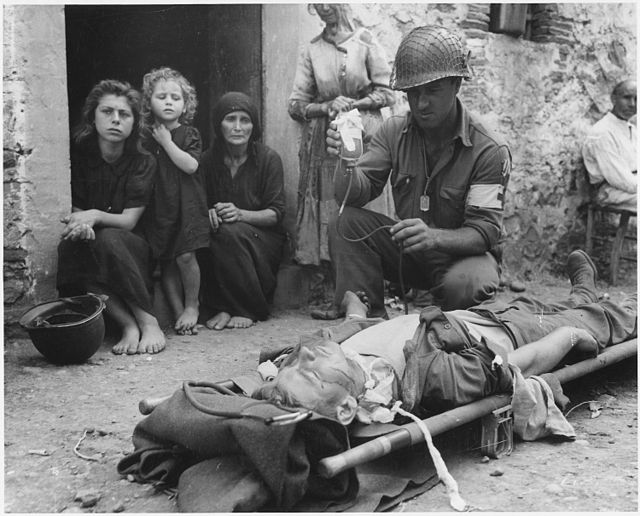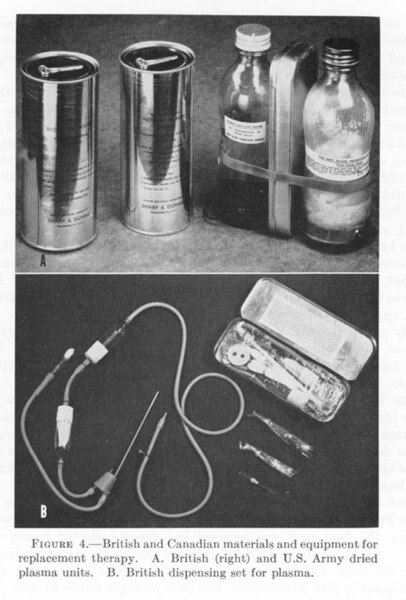Serum is the fluid and solvent component of blood which does not play a role in clotting. It may be defined as blood plasma without the clotting factors, or as blood with all cells and clotting factors removed. Serum contains all proteins except clotting factors, including all electrolytes, antibodies, antigens, hormones; and any exogenous substances. Serum also does not contain all the formed elements of blood, which include blood cells, white blood cells, red blood cells (erythrocytes), and platelets.
Preparation of serum cups for a lipids panel designed to test cholesterol levels in a patient's blood
Blood plasma is a light amber-colored liquid component of blood in which blood cells are absent, but which contains proteins and other constituents of whole blood in suspension. It makes up about 55% of the body's total blood volume. It is the intravascular part of extracellular fluid. It is mostly water, and contains important dissolved proteins, glucose, clotting factors, electrolytes, hormones, carbon dioxide, and oxygen. It plays a vital role in an intravascular osmotic effect that keeps electrolyte concentration balanced and protects the body from infection and other blood-related disorders.
A unit of donated fresh plasma
Bags of frozen plasma, from a person with hypercholesterolemia (left) and typical plasma (right)
Private Roy W. Humphrey is being given blood plasma after he was wounded by shrapnel in Sicily in August 1943.
Dried plasma packages used by the British and US militaries during WWII.





